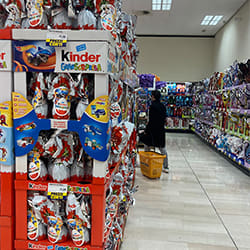Sardinia is indeed one of the most popular travel destinations for Italians in the Summer time thanks to its beautiful coast, pristine beaches, crystal clear water and rugged hinterland landscape.
But not many people know there is a “Ligurian pearl” on the island: Carloforte.
Carloforte is a town on a smaller island within the Sardinian island.
Carloforte is located in the deep south of Sardinia; the inhabitants of this place speak tabarchino, a very ancient Ligurian dialect.
This term actually indicates a variety of Genoese spoken on two islands in Sardinia, San Pietro and Sant'Antioco, in the towns of Carloforte and Calasetta.
In Liguria, only the elderly know this dialect, the young generations no longer speak it nor understand it. But not here where tradition is being passed on and where thousands of people still speak it.
The tabarchina tradition has its origin in the early 1500s, when a small Ligurian community from Pegli emigrated to the islet of Tabarka (hence the distinctive name) near Tunis. For centuries, they dedicated themselves to the flourishing coral fishing and the commercial trafficking of spices and fine fabrics. When relations with the North African Rais deteriorated, they asked King Charles Emmanuel III of Savoy for protection until he granted them this small island (San Pietro) in the south of Sardinia.
Since 2004 Carloforte has become an Honorary Municipality of the Metropolitan City of Genoa, a recognition due by virtue of the historical, linguistic and economic ties with Liguria, whose cultural and gastronomic uses are jealously handed down.
Even if Sardinia has its own distinct culinary tradition as all Italian regions do, Carloforte and neighboring villages maintain a tradition linked to Ligurian cuisine so in restaurants here you can find pesto, trofie, walnut sauce, focaccia bread and even farinata (chickpea flatbread).
Once a year the Couscous festival is held here and it is called cascà just like in Genoese dialect.
Wait, what? Isn’t couscous a dish of Arabic descent?
Sure is, but Genoa has always had a Maghreb influence and welcomed the tradition of couscous making long ago due to the fact its port has always been connected to the ports in Algeria and Tunisia favoring exchanges between the two cultures which ultimately led to ‘adding couscous to the local fare.’
The village of Carloforte is a true architectural jewel, which extends on a gentle slope and is characterized by its narrow streets and alleys, where the pastel colors of the houses mix with the intense blue of the sea. The historic center of the village is among the most beautiful in Italy, and the ancient defensive fortifications, such as the watchtowers and sections of walls with blockhouses, testify to the long history of this community.
The Carloforte residents' devotion to the sea is palpable everywhere, and the coasts of the island of San Pietro are a succession of jagged rocks and breathtaking inlets.
In summary, Carloforte is a tourist destination that offers the visitor an authentic experience, including history, culture and breathtaking landscapes other than being a Genoese pocket in the middle of the sea.

Carloforte promontory
The tabarchini people remain skilled fishermen and the tuna is staple food here.
The tuna a la carlofortina is cut into cubes and sautéed in a pan with white wine and bay leaves. Fresh tuna sauce is made adding olives, capers and pecorino and it is used to dress linguine.
Tuna is also the protagonist of one of the island's traditional and international events, the Girotonno, which is held at the end of May and includes chef competitions, musical events and outdoor shows that recall the ancient ritual of tuna slaughter, a little brutal but typical of this original community.

Tuna spaghetti a la Carlofortina





























































